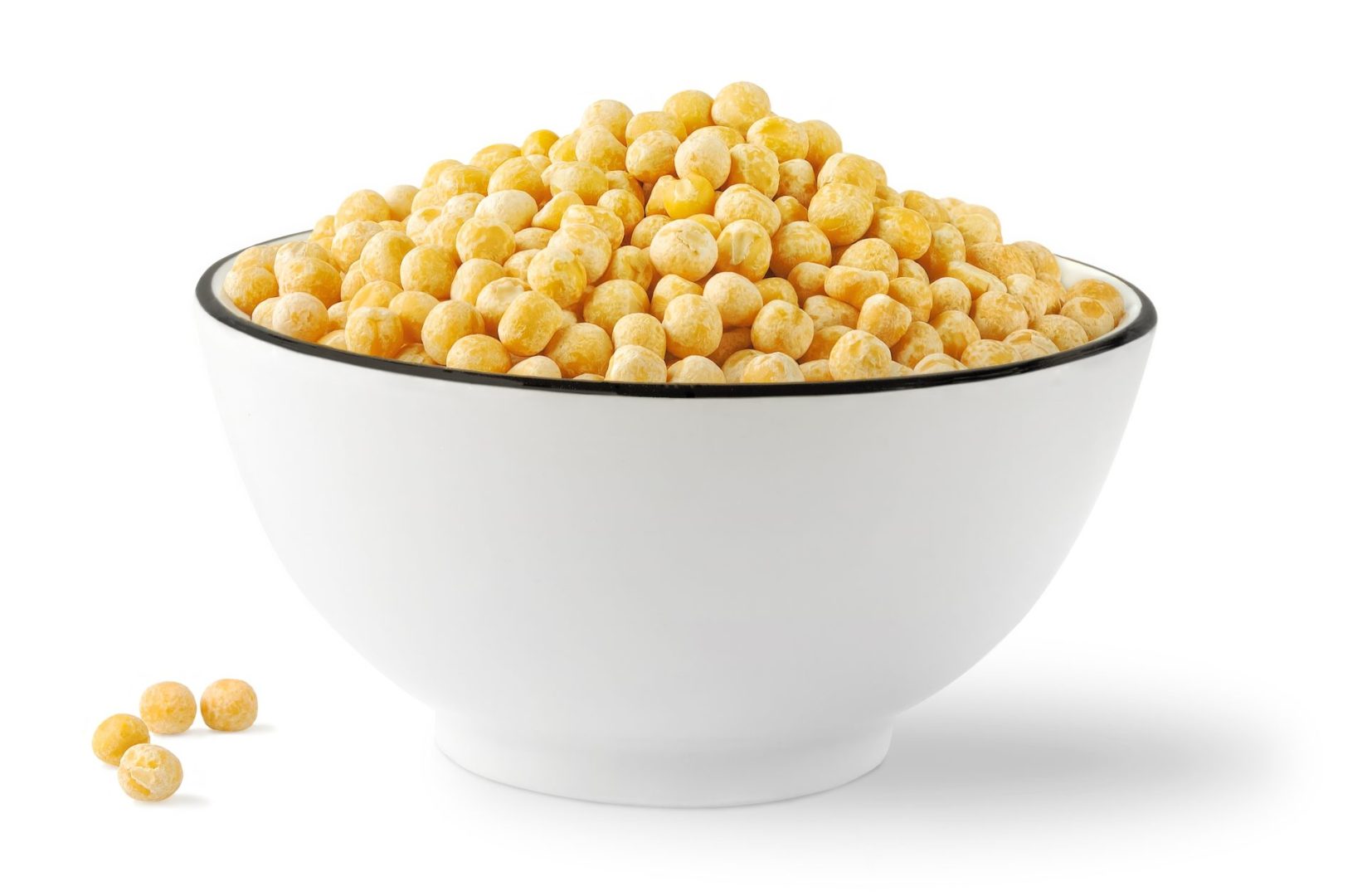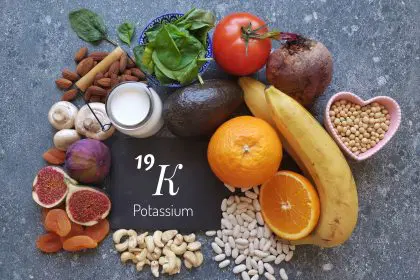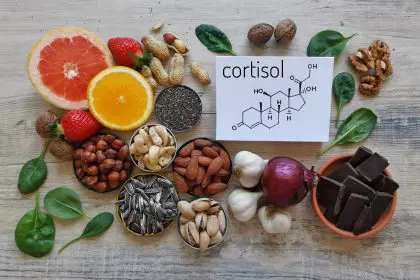Your kitchen pantry might already contain two of the most effective weapons against high cholesterol and inflammation. Recent discoveries have revealed that chickpeas and black beans can deliver remarkable health benefits in just a matter of weeks, offering hope for millions of Americans struggling with heart health concerns.
New evidence shows that people who eat these humble legumes daily experience measurable improvements in their cholesterol levels and inflammatory markers within 12 weeks. The results are so compelling that nutrition experts are calling for a major shift in how we think about everyday foods and their healing potential.
For years, people have searched for natural ways to improve their heart health without relying solely on medications. This latest information suggests that the answer might be sitting right in your pantry, waiting to be discovered. These findings offer a fresh perspective on how simple dietary changes can create measurable improvements in cardiovascular health.
The remarkable transformation happens fast
People who consume one cup of chickpeas or black beans daily start seeing changes in their health markers within weeks. Those eating chickpeas experience significant reductions in total cholesterol levels, while black bean consumers show decreased inflammation throughout their bodies.
What makes these results even more impressive is that they occur without any other major lifestyle changes. People continue their regular routines while simply adding one cup of legumes to their daily diet. The simplicity of this approach makes these findings particularly relevant for anyone seeking practical ways to improve their health.
The improvements happen gradually but consistently. Within six weeks, many people notice changes in how they feel, and by 12 weeks, the measurable health benefits become clear. This timeline gives people realistic expectations while showing that meaningful change doesn’t require years of dietary perfection.
These beans work their magic through multiple pathways in the body, addressing cholesterol, inflammation, and blood sugar regulation simultaneously. This comprehensive approach makes them particularly valuable for people dealing with multiple health concerns at once.
Understanding cholesterol and inflammation connection
High cholesterol affects millions of Americans, contributing to heart disease, stroke, and other cardiovascular problems. When cholesterol levels remain elevated over time, it can lead to the buildup of plaque in arteries, restricting blood flow and increasing the risk of serious health events.
Inflammation plays a crucial role in this process, acting like fuel on the fire of cardiovascular disease. Chronic inflammation damages blood vessel walls, making them more susceptible to cholesterol deposits. This creates a dangerous cycle where high cholesterol and inflammation feed off each other.
Many people struggle with both issues simultaneously, particularly those with prediabetes or metabolic concerns. Approximately one in ten Americans currently lives with diabetes, with the vast majority having type 2 diabetes. Prediabetes represents a critical warning stage where intervention can prevent progression to full diabetes.
The encouraging news is that both cholesterol and inflammation respond well to dietary changes. Unlike genetic factors that can’t be modified, these health markers can improve significantly with the right nutritional approach.
1. Chickpeas: nature’s cholesterol fighter
Chickpeas have earned their reputation as cholesterol-fighting champions through their unique nutritional profile. These round, nutty legumes pack an impressive combination of soluble fiber, plant-based protein, and heart-healthy compounds that work together to lower cholesterol levels.
The soluble fiber in chickpeas acts like a sponge in the digestive system, binding to cholesterol particles and preventing them from being absorbed into the bloodstream. Instead of circulating through the body, this bound cholesterol gets eliminated naturally. This process effectively reduces the total amount of cholesterol available to form dangerous plaques in arteries.
Chickpeas also provide substantial amounts of plant-based protein, making them an excellent alternative to animal proteins that might contribute to elevated cholesterol levels. Their protein content helps maintain stable blood sugar levels, preventing the spikes that can contribute to inflammation and metabolic problems.
The folate content in chickpeas supports heart health by helping to regulate homocysteine levels, an amino acid that can contribute to cardiovascular problems when elevated. Additionally, chickpeas contain potassium, which helps regulate blood pressure and supports overall cardiovascular function.
2. Black beans: powerful inflammation fighters
Black beans demonstrate remarkable abilities as inflammation fighters, helping to reduce inflammatory markers throughout the body. Chronic inflammation contributes to numerous health problems, including heart disease, diabetes, and various autoimmune conditions.
The antioxidants in black beans, particularly anthocyanins that give them their dark color, help combat oxidative stress throughout the body. These compounds work to neutralize harmful free radicals that can damage cells and contribute to chronic diseases. The darker the bean, the higher the antioxidant content.
Black beans also contain significant amounts of magnesium, a mineral that many Americans don’t get enough of in their diets. Magnesium supports heart rhythm regulation, helps maintain healthy blood pressure, and plays a role in glucose metabolism. This makes black beans particularly valuable for people with prediabetes.
The fiber in black beans provides additional benefits beyond cholesterol management, supporting digestive health and helping to maintain stable blood sugar levels. This comprehensive approach addresses multiple aspects of metabolic health simultaneously.
The science behind bean benefits
Legumes belong to a unique category of foods that combine the benefits of both vegetables and protein sources. This dual nature makes them exceptionally valuable for heart health and overall nutrition. When soluble fiber reaches the digestive system, it forms a gel-like substance that binds to cholesterol-containing compounds.
The body then eliminates these bound compounds, forcing the liver to use existing cholesterol to produce new bile acids. This process effectively reduces the total amount of cholesterol circulating in the bloodstream. Over time, this mechanism can lead to significant improvements in cholesterol profiles.
The protein content in legumes also contributes to their health benefits. Plant-based proteins have been associated with lower risks of cardiovascular disease compared to some animal proteins. They provide essential amino acids while avoiding the saturated fats often found in animal protein sources.
People who consume legumes regularly have lower risks of heart disease, certain cancers, and diabetes. The combination of fiber, protein, vitamins, and minerals in legumes creates a synergistic effect that supports multiple aspects of health simultaneously.
Practical ways to enjoy these heart-healthy foods
Despite their impressive health benefits, legumes remain underutilized in typical American diets. The average person spends very little on legumes annually, missing out on both their nutritional and economic advantages. These foods are among the most affordable protein sources available, making them accessible to people across all income levels.
Adding chickpeas and black beans to your diet doesn’t require dramatic changes to your eating habits. They can be incorporated into familiar dishes and cuisines, making the transition easier and more sustainable. Canned varieties offer convenience, while dried legumes provide even greater cost savings and can be prepared in large batches.
Soups and stews provide excellent opportunities to include these legumes, as they absorb flavors well and add satisfying texture. Salads become more filling and nutritious with the addition of chickpeas or black beans, creating complete meals that provide sustained energy.
For people following various dietary patterns, legumes adapt well to different cuisines and cooking styles. They work equally well in Mediterranean, Mexican, Indian, and Middle Eastern dishes, providing flexibility for diverse taste preferences.
Creative ways to include more beans
Transform your breakfast by adding black beans to scrambled eggs or breakfast burritos. The combination provides sustained energy and helps stabilize blood sugar levels throughout the morning. Chickpeas can be roasted with spices for a crunchy breakfast topping over yogurt or oatmeal.
Lunch options expand dramatically with beans as the foundation. Chickpea salad sandwiches offer a plant-based alternative to traditional protein fillings. Black bean quesadillas provide satisfying meals that combine familiar flavors with heart-healthy ingredients.
Dinner preparations become more interesting with beans as starring ingredients. Chickpea curry provides warming comfort food that delivers serious nutritional benefits. Black bean burgers satisfy cravings for familiar foods while supporting cardiovascular health.
Snack time transforms when beans become your go-to option. Roasted chickpeas seasoned with garlic, cumin, or paprika create satisfying alternatives to processed snacks. Hummus made from chickpeas provides protein-rich dips for vegetables or whole grain crackers.
Making the change sustainable
The key to successfully incorporating more legumes into your diet lies in starting gradually and finding preparation methods that you enjoy. Some people experience digestive discomfort when suddenly increasing their fiber intake, so a gradual approach helps your body adjust comfortably.
Experimenting with different seasonings and cooking methods can help you discover preparations that appeal to your taste preferences. Mediterranean preparations with olive oil and herbs create different flavor profiles than Mexican-inspired dishes with cumin and chili peppers.
For people with digestive sensitivities, proper preparation techniques can minimize potential discomfort. Soaking dried beans overnight and cooking them thoroughly helps break down compounds that might cause digestive issues. Starting with smaller portions and gradually increasing intake allows your digestive system to adapt.
The environmental benefits of choosing legumes over animal proteins add another compelling reason to increase consumption. Legumes require fewer resources to produce and have a lower environmental impact, making them a sustainable choice for both personal and planetary health.
Meal planning becomes easier when beans serve as versatile foundations for multiple dishes. Cooking large batches on weekends provides ready-to-use ingredients for quick weekday meals. Frozen cooked beans maintain their nutritional value while offering maximum convenience.
Long-term health benefits
The cardiovascular benefits of regular bean consumption extend far beyond cholesterol reduction. People who eat legumes regularly experience lower blood pressure, improved blood sugar control, and reduced risk of heart disease over time. These cumulative effects build upon each other, creating increasingly significant health improvements.
Weight management becomes easier with beans as dietary staples. Their high fiber and protein content promotes satiety, helping people feel satisfied with smaller portions. This natural appetite regulation supports healthy weight maintenance without restrictive dieting approaches.
Digestive health improves as the beneficial bacteria in the gut thrive on the fiber provided by legumes. This creates a positive cycle where improved gut health supports better nutrient absorption and immune function throughout the body.
The affordability of beans makes sustainable healthy eating accessible to everyone, regardless of budget constraints. This economic advantage allows people to maintain heart-healthy diets long-term without financial stress that might otherwise derail good intentions.













